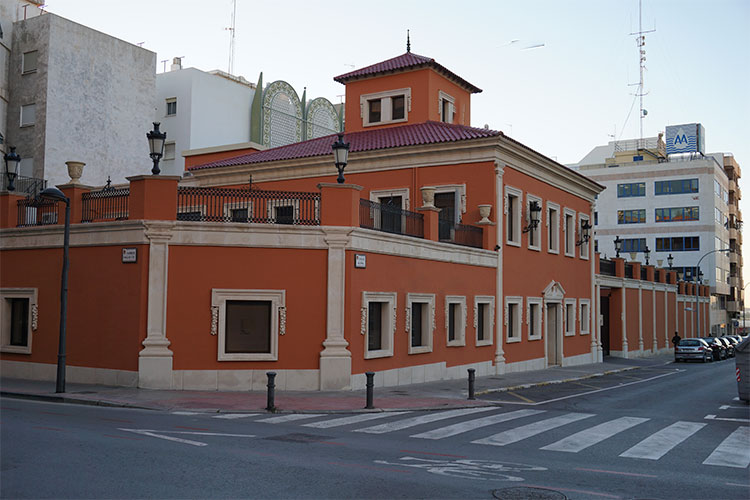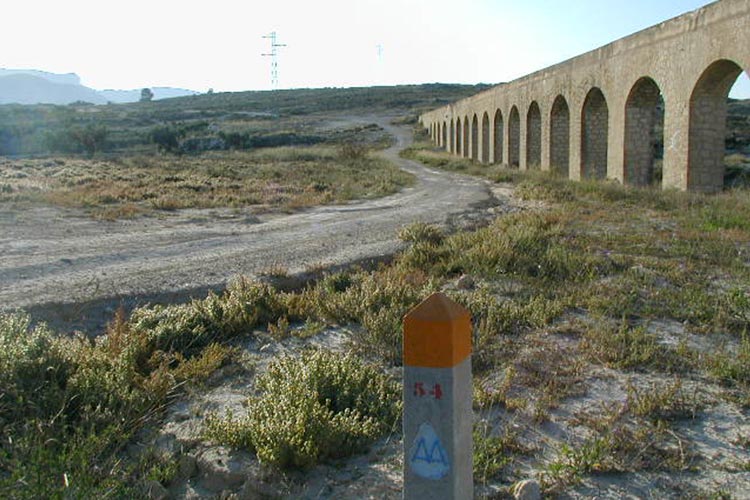Conoce nuestros orígenes
El inicio de la gestión de Aguas de Alicante se remonta al año 1898, año en el que se inauguró el abastecimiento a la ciudad de Alicante con motivo de la traída de las aguas de Sax. Actualmente, Aguas de Alicante es una empresa implicada en la utilización de tecnología punta, comprometida con una política de calidad integral dirigida al desarrollo sostenible y la protección del medio ambiente.
-
Antecedentes
Tradicionalmente, la escasez de agua ha constituido un problema de vital importancia en Alicante, y ha influido negativamente en el desarrollo socioeconómico de la ciudad durante mucho tiempo. Esto se debe principalmente a las condiciones climatológicas: en la zona predomina un clima semiárido, con escasas precipitaciones y elevadas temperaturas, en la que no existen redes fluviales, ni grandes reservas superficiales o subterráneas de agua.
La solución a este déficit natural pasa por la captación de reservas fuera de nuestro enclave, o el acopio de las mismas desde diversos sistemas que, en cualquier caso, necesitan un concepto de planificación, desarrollo y explotación, y un sistema de infraestructuras hídricas bastante complejo. Este sistema se caracteriza en un principio por la búsqueda, captación y reserva a partir de manantiales, fuentes y pozos, así como, posteriormente, con aguas superficiales de cuencas lejanas, como las procedentes del río Taibilla o del río Tajo.
Esta lucha por paliar la escasez de agua y asegurar los recursos es un hecho recurrente y determinante desde los orígenes de la ciudad, aunque el problema se plantea realmente en Alicante a partir del desarrollo industrial y demográfico del siglo XIX. En este contexto, el Ayuntamiento de Alicante siguió con el intento de solucionar definitivamente el abastecimiento de la ciudad, que a finales de siglo ya contaba con 30.000 habitantes. Así, en 1871, surgió un nuevo proyecto: el Ayuntamiento de Alicante adoptó el primer acuerdo para suscribir un contrato con la sociedad “Canal de Alicante”, con el fin de abastecer a la ciudad desde pozos artesianos situados en el término municipal de Sax, a 48 km de Alicante.

En 1879, se disolvió la citada Sociedad y los pozos fueron comprados por D. Juan Leach Giró, quien en 1884 solicitó al Consejo de Alicante la utilidad pública de las aguas para abastecer la ciudad. En 1885, consiguió autorización del Gobierno Civil para realizar las obras necesarias del denominado “Canal del Cid”.
En 1891, el señor Leach Giró vendió los pozos a D. Enrique Caucourte y Joulliot, quien presentó en el Ayuntamiento el proyecto de abastecimiento que fue aprobado en mayo de 1892. El concurso-subasta le fue adjudicado, firmándose en fecha de 11 de julio de 1893 la escritura de la concesión administrativa, en régimen de exclusividad, “para abastecimiento de aguas a la ciudad de Alicante”, por un plazo de sesenta años.
-
La constitución de la empresa mixta
Estando cerca de la finalización del plazo de concesión (sesenta años), y resolver el problema de abastecimiento, el Ayuntamiento de Alicante, en sesión del Pleno Municipal de 30 de septiembre de 1952, acordó la creación de una comisión para el estudio de la municipalización del servicio en régimen de monopolio. Tras la tramitación del correspondiente expediente, el 17 de septiembre de 1953, se constituyó la Sociedad “Aguas Municipalizadas de Alicante, Empresa Mixta” entre el Ayuntamiento de Alicante y la Sociedad Mercantil Aguas de Alicante, S.A., desembolsando cada uno de los socios el 50% del capital social.

El Pleno Municipal, en sesión de 3 de abril de 1987, adoptó un acuerdo relativo a la adjudicación a Aguas de Alicante de la gestión del servicio municipal de alcantarillado, y el 14 de mayo de 1987 se suscribió el contrato administrativo que establecía la ampliación del plazo de duración de la empresa mixta hasta el 28 de marzo de 2016.
Por último, el Pleno Municipal del Ayuntamiento de Alicante, en fecha 11 de julio de 2006, acordó aprobar los Planes Directores de Abastecimiento de Agua Potable, Saneamiento y Reutilización de Aguas Depuradas, así como la modificación de la duración del plazo de gestión de dichos servicios hasta el 14 de mayo de 2036. -
Incorporación de nuevos caudales y nuevas infraestructuras de suministro
El abastecimiento hasta finales de los años 50 seguía proviniendo exclusivamente de los pozos de Sax y Villena, pero ya no resultaba suficiente para Alicante (sobre todo teniendo en cuenta el incipiente desarrollo de la Albufereta y la Playa de San Juan). Así pues, la creciente demanda obligó al Ayuntamiento de Alicante a integrarse en la Mancomunidad de los Canales del Taibilla, creada en 1927 para el abastecimiento de la Base Naval de Cartagena desde el río Taibilla. Alicante recibió agua de la Mancomunidad por primera vez en 1958, lo que permitió el desarrollo urbanístico de la playa de San Juan, a partir de 1961.

En 1967, comenzó la construcción del Trasvase Tajo-Segura, que empezó a aportar agua en 1977. AMAEM recibe agua de dicho trasvase a través de la Mancomunidad de los Canales del Taibilla. Actualmente, se ha comenzado el Trasvase Júcar-Vinalopó. Además, desde 1973, AMAEM viene ejecutando obras de desdoblamiento del Canal del Cid y continúa la búsqueda de nuevos aportes de agua con nuevas captaciones subterráneas, y mediante convenios con comunidades de regantes en la zona del Alto y Medio Vinalopó.
En 1984 se inauguró la conducción submarina, de 5 km de longitud, para el suministro de agua potable a la isla de Tabarca siendo, así, la única isla del litoral español que se abastece con este procedimiento. También se suministra agua a parte del municipio de Mutxamel y, desde el año 2006, se gestiona el servicio en El Campello.
-
Situación actual
En la actualidad Aguas Municipalizadas de Alicante,E.M. es la empresa responsable de prestar el servicio de abastecimiento de agua en los municipios de Alicante, Sant Vicent del Raspeig, Sant Joan d’Alacant, El Campello, Monforte del Cid y Petrer, así como los servicios de alcantarillado en Alicante, Sant Joan d'Alacant y Petrer. -
Una apuesta de futuro
Nuestra visión como empresa busca poner en valor el éxito del modelo de gestión público-privado que ha convertido a Aguas de Alicante en un referente nacional e internacional. Además, estos nuevos paradigmas requieren un enfoque innovador que pone a las personas en el centro de nuestra gestión. En Aguas de Alicante somos personas al servicio de personas.
